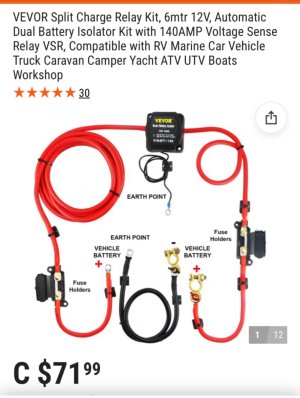ChilliSpoons
Well-Known Member
I have a 16’ Lowe aluminum boat that use in the lakes and rivers. It came with a two battery setup, one 14 years old and the other 9. I’ve set the boat up with a couple of two belt Scotty electrics which suit my needs perfectly.
On my last outing I had issues retrieving my downriggers which after a load test from CT turned out to be a bad house battery. The older of the two batteries was my starter battery which tested out good. I’ve since purchased two new batteries from Costco which will be installed this weekend as well as a new circuit breaker which show quite a bit of corrosion.
So my boat doesn’t have any kind of isolator switch that I can easily find in the battery compartment. And the batteries aren’t wired in parallel. Could there be an isolator wired further away from the batteries or is there something that I’m missing or not understanding?
On my last outing I had issues retrieving my downriggers which after a load test from CT turned out to be a bad house battery. The older of the two batteries was my starter battery which tested out good. I’ve since purchased two new batteries from Costco which will be installed this weekend as well as a new circuit breaker which show quite a bit of corrosion.
So my boat doesn’t have any kind of isolator switch that I can easily find in the battery compartment. And the batteries aren’t wired in parallel. Could there be an isolator wired further away from the batteries or is there something that I’m missing or not understanding?

